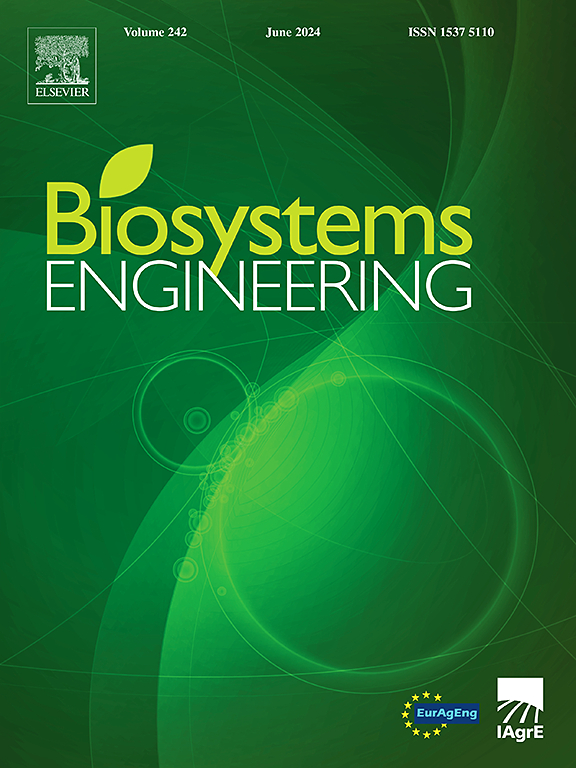Design and experiment of a ridge-surface based cutting height active adjustment system for a leafy vegetable harvester
IF 5.3
1区 农林科学
Q1 AGRICULTURAL ENGINEERING
引用次数: 0
Abstract
Due to the discrepancy between the cutting baseline and the adjustment baseline, existing harvester cutting height adjustment schemes are unsuitable for the ridge-planting and ridge-crossing harvesting modes of leafy vegetables. This study proposes an active cutting height adjustment system based on the ridge surface, thereby achieving the unification of the two baselines. A combined mechanical-hydraulic adjustment scheme is designed. A cutting height adjustment model is established, considering the influence of ridge height. Changes in ridge height during actual harvesting are converted into existing system hardware information, enabling application to different ridge heights. The static test results demonstrated that the system could achieve active adjustment across varying ridge and cutting heights. Under varying ridge heights, the average response times (ARTs) for adjusting the cutting height from 0 mm to 10, 20, and 30 mm were 0.06, 0.16, and 0.22 s, respectively, with mean absolute error values (MAEVs) of 1.2, 1.5, and 1.4 mm. The ARTs for adjusting the cutting height back from 30 mm to 20, 10, and 0 mm were 0.08, 0.20, and 0.29 s, with MAEVs of 1.3, 1.4, and 1.5 mm, respectively. The field test results indicated that the established adjustment system could maintain stubble height within the allowable range of (0, 20) mm with a probability of 0.97, and the average control accuracy was 94.5 %. This study presents a novel and effective active cutting height adjustment method for ridge-planting and ridge-crossing harvesting.
叶菜收获机脊面切削高度主动调节系统的设计与试验
由于刈割基线与调整基线存在差异,现有的收获机刈割高度调整方案不适合叶菜垄种和跨垄收割模式。本研究提出了一种基于脊面的主动切割高度调节系统,从而实现了两个基线的统一。设计了一种机液联合调节方案。建立了考虑脊高影响的切割高度调整模型。实际收获期间山脊高度的变化被转换为现有的系统硬件信息,使应用于不同的山脊高度。静态测试结果表明,该系统可以实现对不同脊线和切割高度的主动调节。在不同脊高条件下,从0 mm调整至10、20和30 mm的平均响应时间(ARTs)分别为0.06、0.16和0.22 s,平均绝对误差(maev)分别为1.2、1.5和1.4 mm。将切割高度从30 mm调整回20、10和0 mm的等效时间为0.08、0.20和0.29 s, maev分别为1.3、1.4和1.5 mm。田间试验结果表明,所建立的调节系统能将留茬高度保持在(0,20)mm允许范围内,控制概率为0.97,平均控制精度为94.5%。提出了一种新的、有效的跨垄种植和跨垄收获的主动切高调节方法。
本文章由计算机程序翻译,如有差异,请以英文原文为准。
求助全文
约1分钟内获得全文
求助全文
来源期刊

Biosystems Engineering
农林科学-农业工程
CiteScore
10.60
自引率
7.80%
发文量
239
审稿时长
53 days
期刊介绍:
Biosystems Engineering publishes research in engineering and the physical sciences that represent advances in understanding or modelling of the performance of biological systems for sustainable developments in land use and the environment, agriculture and amenity, bioproduction processes and the food chain. The subject matter of the journal reflects the wide range and interdisciplinary nature of research in engineering for biological systems.
 求助内容:
求助内容: 应助结果提醒方式:
应助结果提醒方式:


